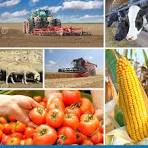5 Different Types of Poultry Houses for Effective Poultry Production
Introduction
Poultry farming is an essential part of the agricultural landscape, providing a significant source of protein for millions around the globe. But did you know that the type of poultry house you choose can greatly influence the productivity and health of your flock? Just like a cozy home can make you feel comfortable and secure, the right poultry house can ensure your birds thrive. In this article, we’ll explore five different types of poultry houses, their benefits, and how they can help you achieve effective poultry production.
Understanding Poultry Housing
Before we jump into the types of poultry houses, let’s take a moment to understand why poultry housing is so crucial. A well-designed poultry house can:
- Protect birds from predators and harsh weather.
- Provide adequate ventilation and lighting.
- Facilitate easy management and biosecurity.
- Promote the overall health and productivity of the flock.

Now, let’s explore the five most common types of poultry houses!
1. Conventional Poultry Houses

What Are They?
Conventional poultry houses are the traditional structures used for raising chickens, turkeys, and other poultry. They are typically long, narrow buildings that house birds in a controlled environment.
Features
- Ventilation Systems: These houses often have mechanical ventilation to regulate temperature and humidity.
- Nesting Areas: They include designated nesting areas for hens to lay eggs.
- Feeding and Watering Systems: Automated feeders and drinkers are commonly used.
Pros and Cons
- Pros: Efficient space utilization, easy to manage, and good biosecurity.
- Cons: Higher initial investment and may require more energy for heating and cooling.
2. Free-Range Poultry Houses
What Are They?
Free-range poultry houses allow birds to roam freely outdoors while having access to shelter. This system promotes natural behaviors, such as foraging and dust bathing.
Features
- Outdoor Access: Birds can access a fenced outdoor area.
- Natural Ventilation: These houses often rely on natural airflow for ventilation.
- Enrichment: The outdoor environment provides enrichment opportunities.
Pros and Cons
- Pros: Healthier birds, better meat and egg quality, and improved welfare.
- Cons: More susceptible to predators and weather changes, and management can be more complex.
3. Cage-Free Poultry Houses
What Are They?
Cage-free poultry houses provide birds with more space than conventional systems but do not allow outdoor access. Birds can move freely within the house, promoting natural behaviors.
Features
- Multiple Levels: Often designed with multiple tiers to maximize space.
- Nesting Boxes: Hens have access to nesting boxes for laying eggs.
- Perches: Elevated perches for roosting.
Pros and Cons
- Pros: Improved animal welfare, better egg quality, and lower stress levels.
- Cons: Higher feed costs and potential for increased disease transmission.
4. Broiler Houses
What Are They?
Broiler houses are specifically designed for raising chickens for meat production. These houses are optimized for fast growth and efficient feed conversion.
Features
- High Density: Designed to accommodate a large number of birds in a small area.
- Climate Control: Equipped with heating and cooling systems to maintain optimal temperatures.
- Automated Systems: Often include automated feeding, watering, and waste management systems.
Pros and Cons
- Pros: High production efficiency and lower labor costs.
- Cons: Risk of disease outbreaks due to high density and potential welfare concerns.
5. Layer Houses
What Are They?
Layer houses are specifically designed for hens that produce eggs. These houses focus on maximizing egg production while ensuring the health and comfort of the birds.
Features
- Nesting Areas: Ample nesting boxes for hens to lay eggs.
- Egg Collection Systems: Automated systems for efficient egg collection.
- Lighting Control: Controlled lighting to stimulate egg production.
Pros and Cons
- Pros: High egg production rates and efficient management.
- Cons: Requires careful management to prevent stress and maintain health.
Choosing the Right Poultry House
Factors to Consider
When selecting a poultry house, consider the following factors:
- Type of Poultry: Are you raising layers, broilers, or a mix?
- Climate: What is the weather like in your area?
- Budget: What are your initial and ongoing costs?
- Management Style: How hands-on do you want to be?
Balancing Welfare and Production
It’s essential to strike a balance between animal welfare and production efficiency. A well-designed poultry house can enhance the quality of life for your birds while maximizing your output.
Conclusion
Choosing the right type of poultry house is a critical decision that can impact the success of your poultry farming venture. Whether you opt for conventional, free-range, cage-free, broiler, or layer houses, each type has its unique benefits and challenges. By understanding these options and considering your specific needs, you can create an environment that promotes the health and productivity of your flock.
So, are you ready to take the plunge into poultry farming? With the right knowledge and preparation, you can build a thriving poultry operation that benefits both you and your birds!
FAQs
1. What is the best type of poultry house for beginners?
For beginners, a conventional poultry house is often the best choice due to its straightforward design and ease of management.
2. How much space do I need for each bird?
Generally, you should allow at least 2 to 3 square feet per bird in conventional systems, while free-range systems require more space for outdoor access.
3. What are the main benefits of free-range poultry houses?
Free-range poultry houses promote natural behaviors, improve meat and egg quality, and enhance the overall welfare of the birds.
4. How can I ensure biosecurity in my poultry house?
Implement strict access controls, regularly clean and disinfect the house, and monitor the health of your flock to maintain biosecurity.
5. What are the common challenges in managing layer houses?
Common challenges include maintaining optimal conditions for egg production, preventing stress among hens, and managing waste effectively. Feel free to let me know if you need any adjustments or additional information

